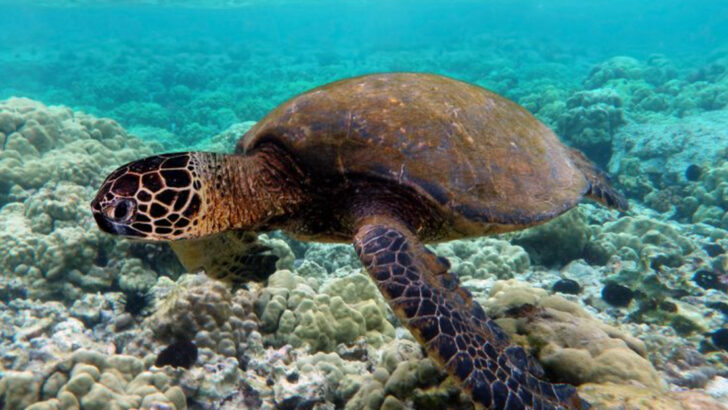Some ocean animals don’t just survive—they outlast everything. Ice ages, mass extinctions, shifting continents—none of it stopped them. These creatures have been swimming through history longer than most species have existed. Their secret? Armor-like shells, mind-blowing adaptability, or ancient instincts that never fail. In a world that’s constantly changing, they’ve found a way to stay strong, steady, and almost impossible to wipe out. If you want to know what true toughness looks like, start by looking beneath the waves.
Horseshoe Crab

With a lineage tracing back 450 million years, the horseshoe crab stands as a living fossil. Its distinctive, helmet-like shell has protected it from predators for eons. The horseshoe crab’s blue blood is highly valued for medical research, adding to its mystique. In the moonlit tide, these creatures gather to spawn, continuing a cycle as old as time. Despite their armor, they face threats from habitat loss and climate change. Yet, their resilience speaks to nature’s evolutionary prowess. This ancient mariner, with its timeless design, remains a cornerstone of marine ecology.
Tardigrade
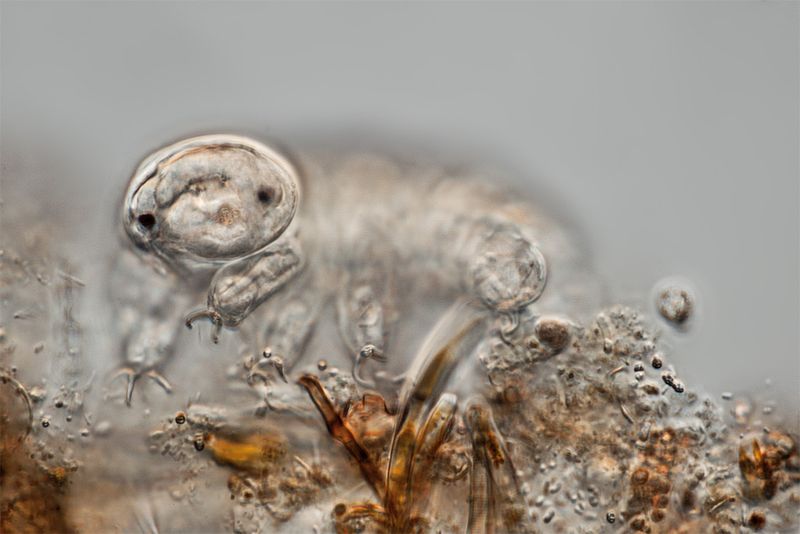
Often referred to as water bears, tardigrades are microscopic wonders of survival. They can endure extreme conditions, from space’s void to volcanic vents. Tardigrades enter a cryptobiotic state, suspending life until conditions improve. This ability has fascinated scientists for years. Despite their tiny size, they possess an indomitable spirit, thriving where most life forms fail. Found in the deep sea, they contribute to our understanding of life’s resilience. Their quirky, bear-like appearance adds to their charm, making them a favorite among researchers and enthusiasts alike.
Coelacanth
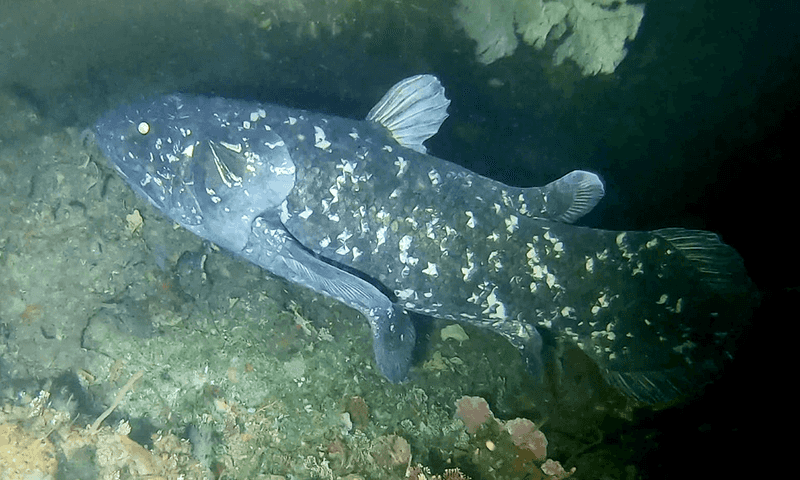
Once thought extinct, the coelacanth made a stunning reappearance in 1938. This deep-sea dweller has remained relatively unchanged for 400 million years. Its lobed fins and distinctive scales tell a story of evolutionary success. Living in the dark ocean depths, it has eluded many predators. The coelacanth’s rediscovery was akin to finding a dinosaur alive today. Its existence challenges our understanding of survival and adaptation. This enigmatic fish continues to intrigue scientists, offering a glimpse into ancient marine life. Its resilience reveals the ocean’s hidden wonders.
Shark
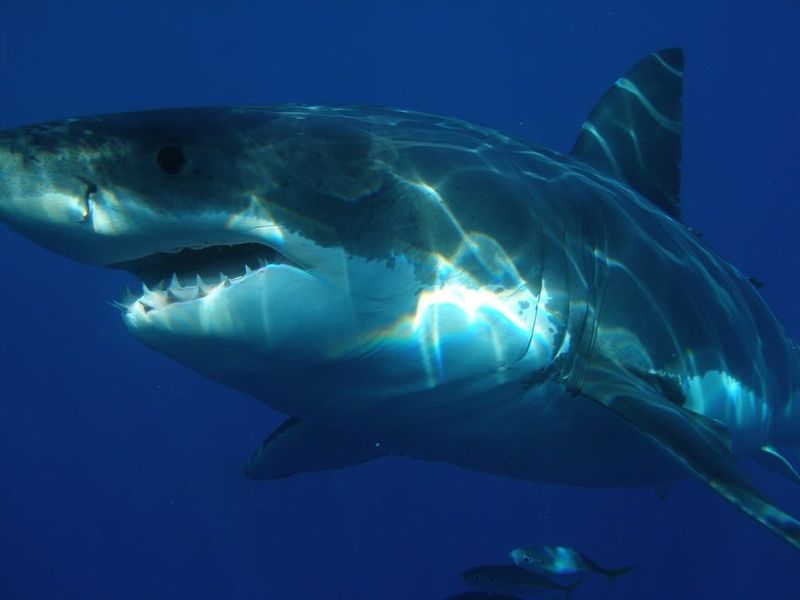
Sharks have patrolled the oceans for over 400 million years, top predators with unmatched adaptability. Their keen senses and powerful physiques make them formidable hunters. Sharks’ evolutionary success lies in their diversity, with species ranging from the tiny pygmy to the massive whale shark. These masters of the sea are vital for healthy ecosystems. Despite their fearsome reputation, many species face threats from overfishing and habitat destruction. Yet, their resilience and adaptability ensure their continued presence in our oceans, embodying nature’s relentless drive to survive.
Nautilus

The nautilus, with its beautiful spiral shell, has existed for over 500 million years. Its buoyancy control and ability to withdraw into its shell make it a master of survival. The nautilus roams the ocean’s depths, a relic from a bygone era. Its presence connects the ancient past with the contemporary marine world. A symbol of wisdom and longevity, the nautilus captivates with its graceful movement and historical significance. This living fossil continues to fascinate scientists and ocean enthusiasts alike, serving as a reminder of the ocean’s timeless mysteries and resilience.
Sea Turtle
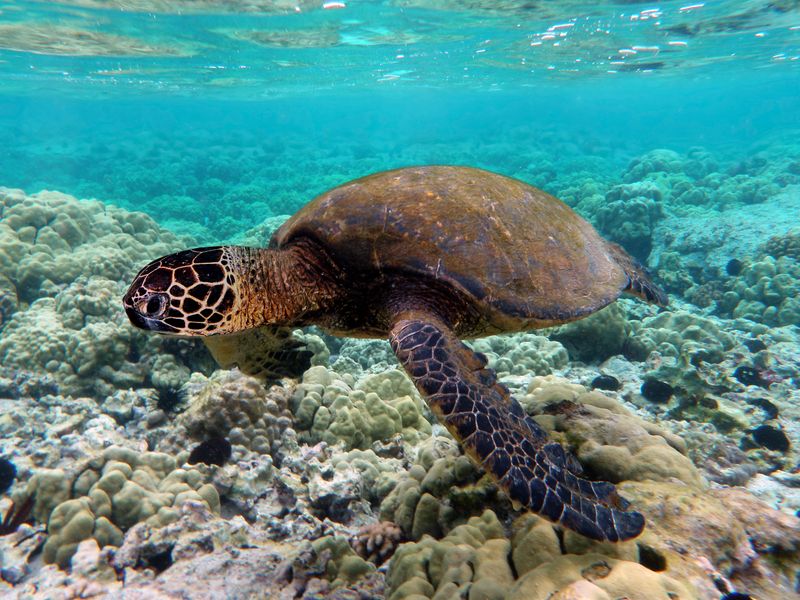
Sea turtles have roamed Earth’s oceans for over 110 million years. Their long migrations and unique nesting behaviors are testaments to their resilience. Sea turtles can navigate thousands of miles, returning to lay eggs on the same beaches where they hatched. Despite facing threats from pollution and climate change, they persist. Their serene presence in the water and their gentle nature earn admiration worldwide. Sea turtles play a crucial role in marine ecosystems, helping maintain coral reef health. Their enduring legacy is a symbol of nature’s perseverance and balance.
Octopus
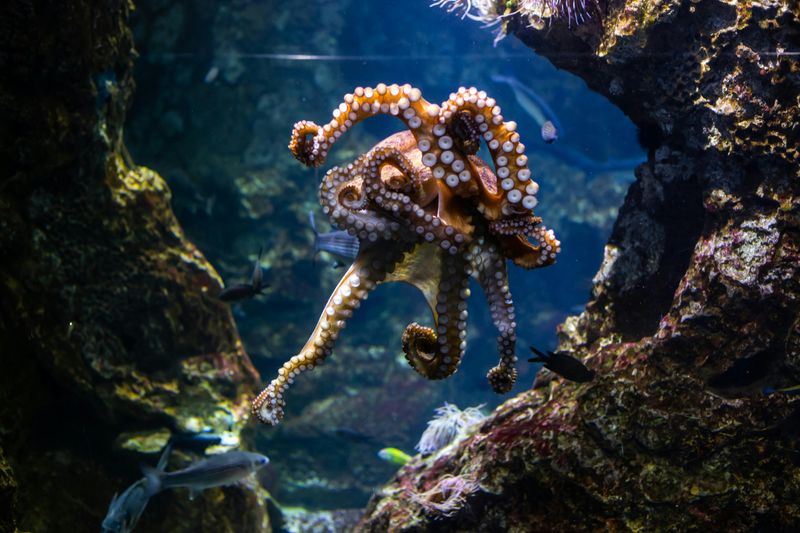
Octopuses are known for their intelligence and adaptability. With the ability to change color and texture, they are masters of camouflage. Octopuses have short lifespans but reproduce prolifically, ensuring survival. Their problem-solving skills and curiosity make them standout ocean dwellers. Often inhabiting rocky crevices, they evade predators with ease. This enigmatic mollusk symbolizes mystery and adaptability in the marine world. Despite their short lives, octopuses have left a lasting impression. Their survival abilities continue to intrigue researchers and educate us about the complexities of marine life.
Jellyfish

Jellyfish, with their gelatinous bodies and flowing tentacles, are ancient inhabitants of the sea. These creatures have thrived for over 500 million years, adapting to various marine environments. Jellyfish can survive without a heart or brain, relying on a simple nerve net for movement. Their stings can be both beautiful and deadly, captivating and warning those who venture too close. As ocean temperatures rise, jellyfish populations expand, displaying their adaptability. This dual nature of grace and danger makes jellyfish a fascinating study of survival in the ocean’s depths.
Sea Urchin

Sea urchins, with their spiny shells, are resilient ocean dwellers. Found in diverse habitats, from rocky shores to deep sea floors, they play a vital role in marine ecosystems. Sea urchins graze on algae, maintaining the balance of underwater environments. Despite their seemingly vulnerable appearance, their spines deter many predators. Sea urchins have survived various environmental changes, adapting to new conditions with ease. Their presence is crucial for coral reef health, preventing algae overgrowth. These spiky survivors exemplify resilience, thriving in the face of adversity and ecological change.
Lobster
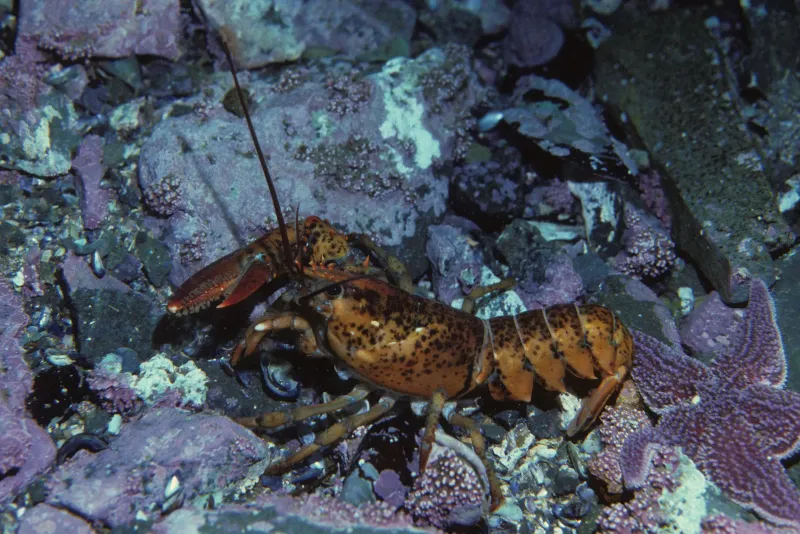
Lobsters are iconic crustaceans, known for their robust claws and long lifespan. They can live for decades, continually growing and regenerating lost limbs. Lobsters inhabit the ocean floor, scavenging for food and shelter among the rocks. Their complex mating rituals and molting processes reveal a fascinating life cycle. Despite overfishing pressures, lobsters maintain stable populations through sustainable practices. Their resilience and adaptability have made them a staple of both marine ecosystems and human cuisine. These hardy creatures symbolize strength and tenacity, thriving in the depths of the ocean.
Starfish
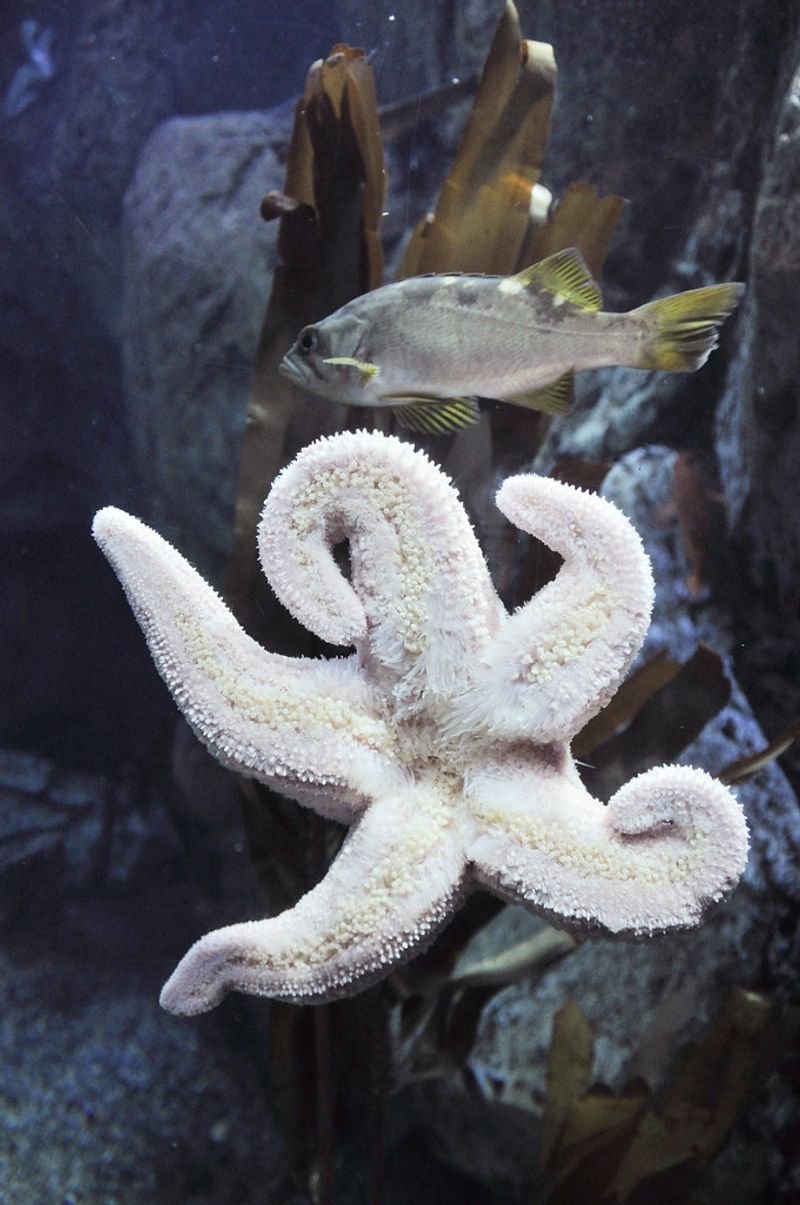
Starfish, or sea stars, are remarkable for their regenerative abilities. Lose an arm, and they can grow it back, sometimes even forming a new starfish. Found across the world’s oceans, they adapt to various environments, from tidal pools to deep sea floors. Starfish play a critical role in ocean ecology, preying on mollusks and maintaining balance. Despite their simple appearance, starfish exhibit complex behaviors. Their resilience to environmental changes underscores their evolutionary success. These celestial-shaped creatures captivate with their beauty and biological prowess, thriving where others might falter.
Coral

Coral reefs are bustling marine marvels, providing habitat and nourishment for countless species. Although corals appear plant-like, they are intricate animal colonies. They form vital ecosystems, despite being vulnerable to climate change and bleaching. Corals grow slowly but steadily, creating sprawling reefs over centuries. These underwater cities support biodiversity, playing a crucial role in marine health. Despite environmental threats, corals exhibit resilience, rebounding under favorable conditions. Their existence highlights the ocean’s intricate balance and the wonders of life. Corals remind us of the importance of preserving marine ecosystems for future generations.
Sea Cucumber

Sea cucumbers, although unassuming in appearance, are vital to ocean health. They recycle nutrients, breaking down detritus on the sea floor. Sea cucumbers can expel their internal organs to evade predators, later regenerating them. Found in both shallow and deep waters, they adapt to various conditions with ease. Despite their vulnerability to overfishing, sustainable practices support their populations. Sea cucumbers’ odd yet effective defense and ecological contributions make them fascinating subjects of study. Their resilience is a testament to the ocean’s diverse life forms and the balance they maintain.
Orca
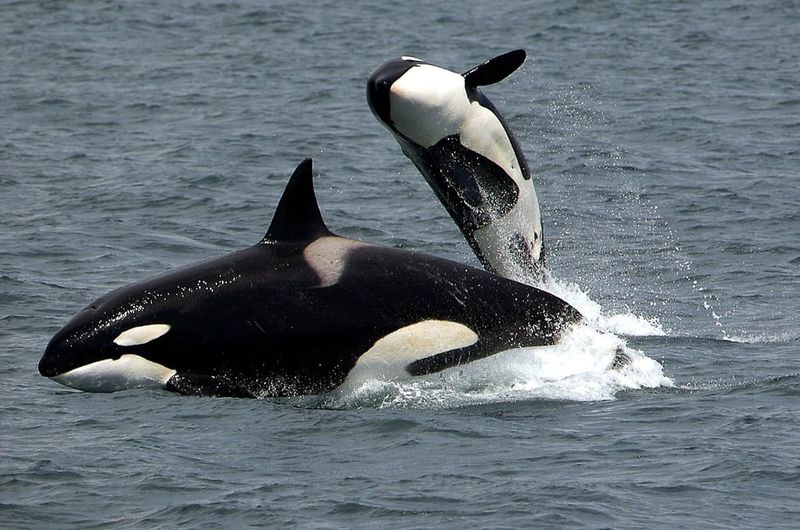
Orcas, often called killer whales, are apex predators with social intelligence and complex communication. These majestic creatures travel in pods, using cooperative hunting techniques. Found in oceans worldwide, orcas adapt to diverse environments, from icy waters to temperate seas. Despite their reputation, they exhibit a playful and curious nature. Orcas’ adaptability and intelligence make them formidable hunters and fascinating marine mammals. Their presence in the ocean exemplifies the intricate relationships within marine ecosystems. These magnificent animals inspire awe and admiration, symbolizing oceanic strength and majesty.
Dolphin
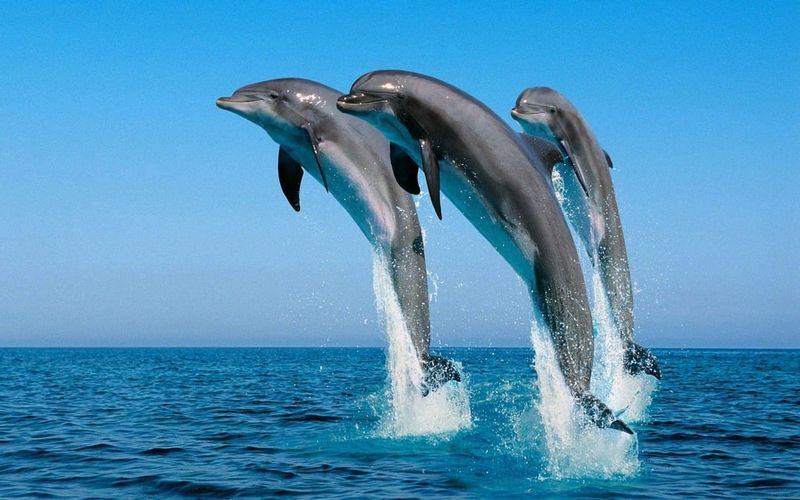
Dolphins are celebrated for their intelligence, agility, and social bonds. Living in pods, they communicate using clicks and whistles, showcasing complex behaviors. Dolphins inhabit warm ocean waters, thriving in diverse environments. Their playful nature and acrobatics delight observers and researchers alike. Despite facing threats from pollution and fishing nets, dolphins display remarkable resilience. They contribute to marine ecosystems as both predators and prey. These charismatic mammals embody the spirit of the ocean, engaging with humans and nature alike. Dolphins’ enduring appeal continues to captivate and educate us about marine life.
Blue Whale
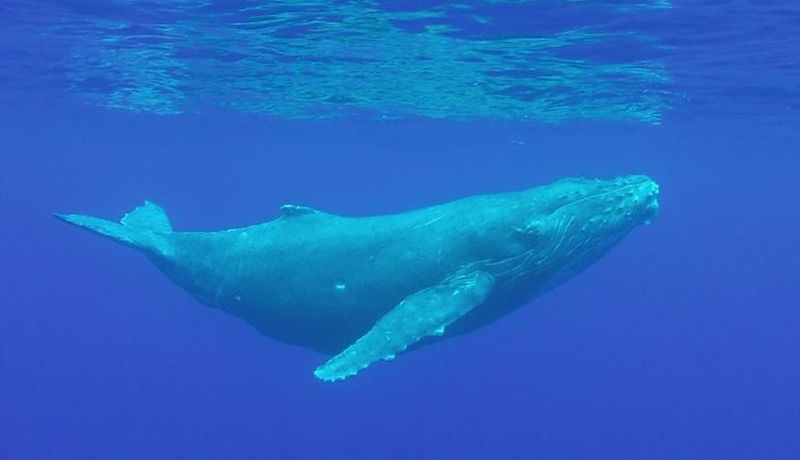
The blue whale, the largest animal on Earth, embodies oceanic grandeur. Despite its size, it feeds primarily on tiny krill, showcasing nature’s balance. Blue whales migrate vast distances, navigating through oceans with grace. Their haunting songs communicate across miles, reflecting deep intelligence. Although once hunted to near extinction, conservation efforts have allowed populations to recover. These gentle giants play a vital role in marine ecosystems, contributing to ocean health. The blue whale’s majesty and resilience inspire wonder and respect, symbolizing the vastness and mystery of marine life.
Penguin
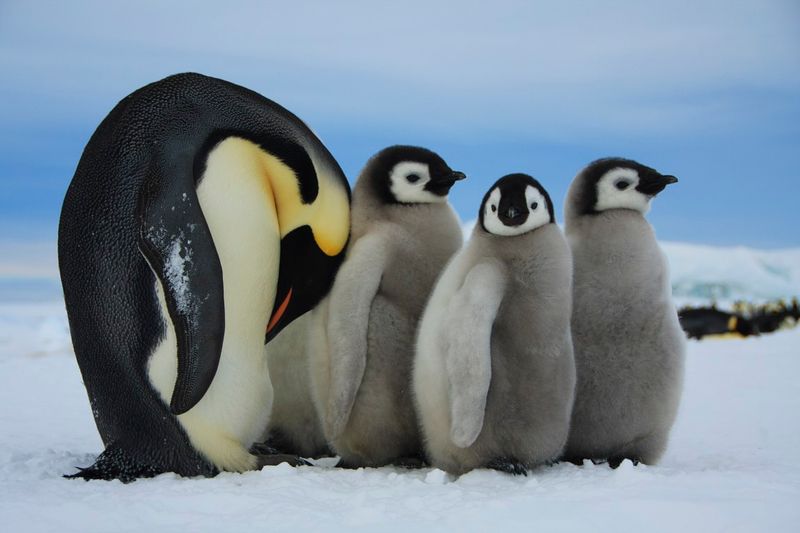
Penguins, particularly emperor penguins, are synonymous with Antarctic endurance. These flightless birds brave extreme cold, huddling together for warmth. Emperor penguins’ unique breeding cycle, with males incubating eggs on ice, exemplifies dedicated parenting. Despite harsh conditions, penguins thrive in the icy waters, exhibiting remarkable adaptability. Their playful antics and social behaviors endear them to observers worldwide. Penguins navigate through turbulent waters, displaying agility and resilience. Their existence highlights the balance and interdependence of life in extreme environments. These charming birds embody the spirit of survival and community in the face of adversity.

